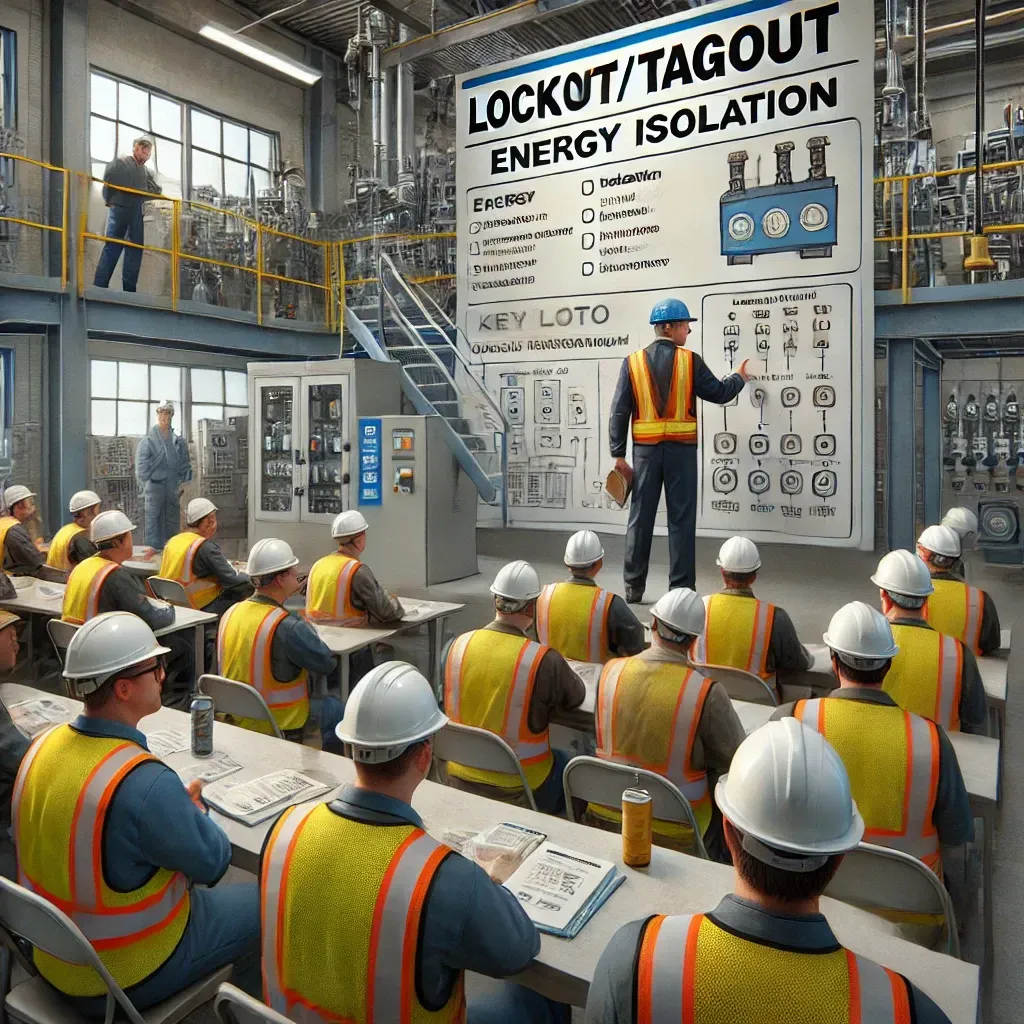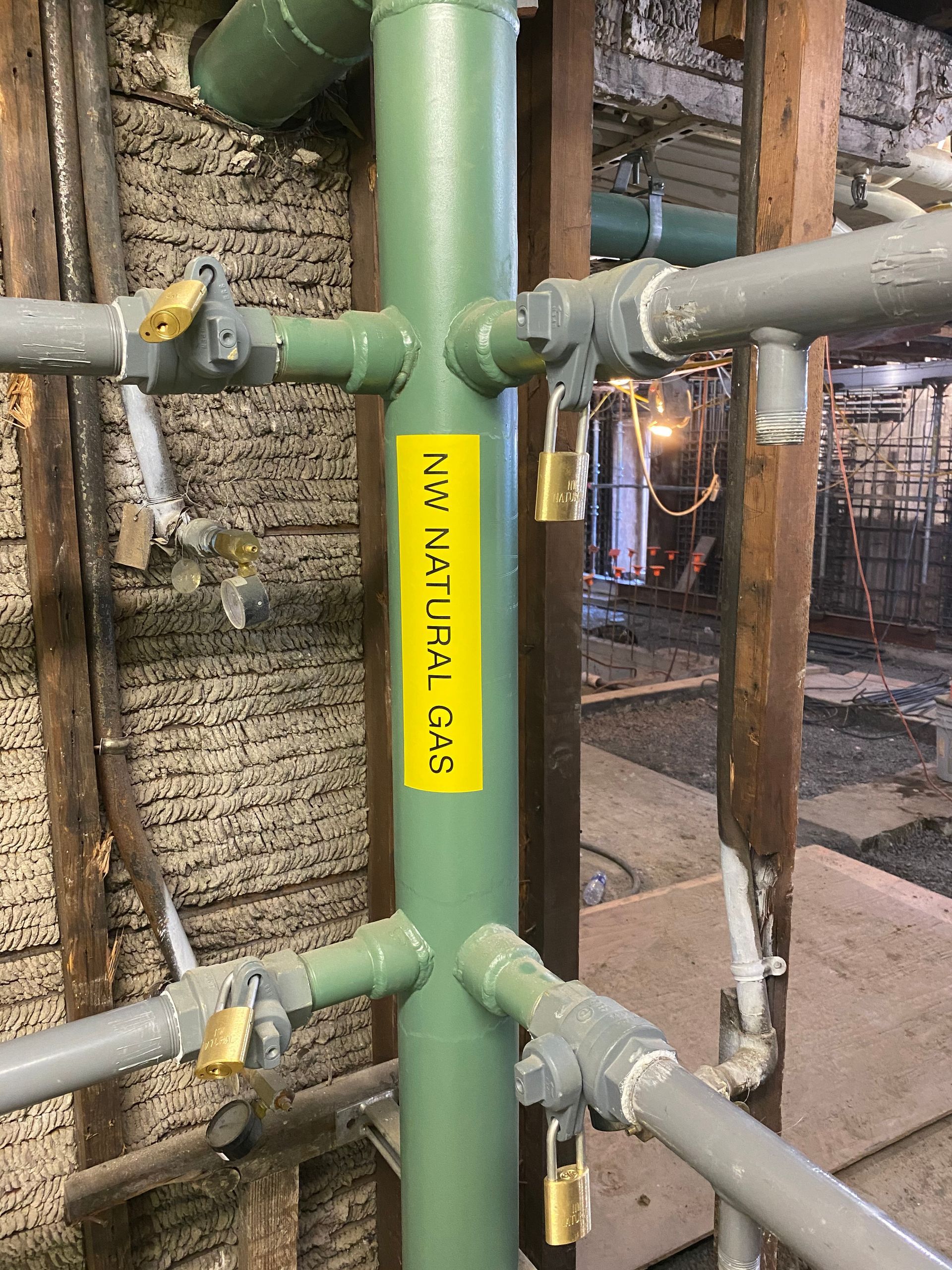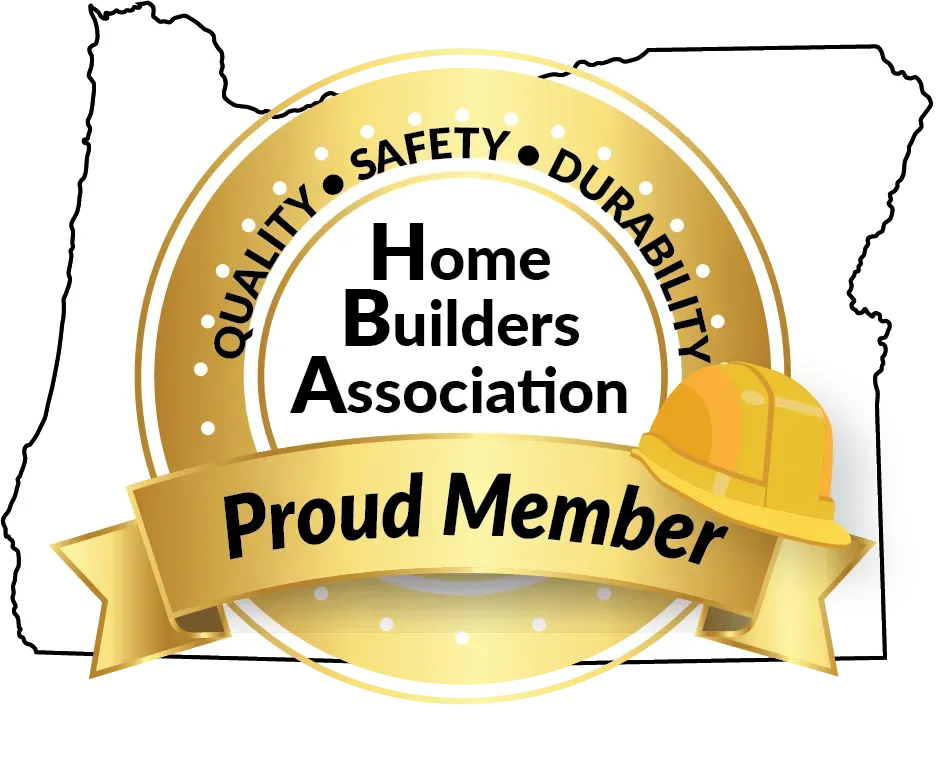Lockout/Tagout Training
Online Training

What Lockout/Tagout Training covers:
Our Lockout/Tagout Authorized Person Training is designed to provide employees with the knowledge and skills necessary to control hazardous energy sources safely and comply with OSHA’s LOTO Standard (29 CFR 1910.147). Below is an outline of the key topics covered in our training program:
1. Introduction to Lockout/Tagout (LOTO)
- Definition and purpose of LOTO.
- OSHA regulations and compliance requirements.
- Why LOTO is critical in preventing workplace injuries.
2. Understanding Hazardous Energy
- Types of hazardous energy:
- Electrical
- Mechanical
- Hydraulic
- Pneumatic
- Thermal
- Chemical
- Gravitational
- How energy can be unexpectedly released and cause injury.
3. Roles and Responsibilities in LOTO
- Authorized Employees: Those who perform LOTO procedures.
- Affected Employees: Those working near locked-out equipment.
- Other Employees: Those who must understand LOTO rules but do not perform lockout procedures.
4. Lockout/Tagout Devices and Proper Use
- Types of LOTO devices:
- Locks
- Tags
- Hasps
- Valve covers
- Circuit breaker locks
- How to properly select and use LOTO devices.
5. Step-by-Step LOTO Procedures
- Preparation for Shutdown: Identifying energy sources and notifying affected employees.
- Equipment Shutdown: Using normal operating controls.
- Energy Isolation: Identifying and disconnecting all energy sources.
- Applying Lockout/Tagout Devices: Ensuring complete energy control.
- Verification of Isolation: Testing equipment to confirm zero energy state.
- Performing Maintenance or Servicing.
- Restoring Energy and Removing Lockout Devices: Safe re-energization of equipment.
6. Special Lockout/Tagout Situations
- LOTO for electrical panels and circuit breakers.
- Lockout for hydraulic and pneumatic systems.
- Group lockout/tagout procedures.
- Shift changes and continuity of LOTO.
- Exceptions to LOTO requirements.
7. LOTO Safety Inspections and Compliance
- OSHA’s requirements for periodic LOTO inspections.
- Common violations and how to avoid them.
- Importance of documentation and training.
8. Hands-On LOTO Demonstration and Practice
- Step-by-step application of LOTO on real or simulated equipment.
- Identifying potential LOTO hazards.
- Using LOTO devices correctly.
- Real-world troubleshooting scenarios.
9. Emergency Procedures for LOTO
- Responding to unexpected startup incidents.
- Handling lost or missing LOTO devices.
- What to do in case of an emergency during lockout.
10. Course Completion and Certification
- Final knowledge assessment or quiz.
- Course completion certificate issued to participants.
- Review of best practices and continuous improvement strategies.
Why Choose Our Training?
OSHA-compliant curriculum. Our training uses OSHA, ANSI and our site inspectors knowledge to but a very comprehensive training program.
Practical, hands-on training work sheet is provided for users after the training.
Expert instructors with real-world experience.
Our LOTO training ensures employees understand their responsibilities and can apply safe energy control practices in their workplace, reducing the risk of injury and regulatory violations.
Ready to improve workplace safety? Click on the link above to start your Lockout/Tagout training!

Why You Need Lockout/Tagout Training for Your Business?
Workplace safety is a top priority for any business, especially those involving machinery, electrical systems, or hazardous energy sources. Lockout/Tagout (LOTO) training is essential for protecting workers, ensuring compliance, and preventing costly accidents. Here’s why your business needs it:
1. Prevent Serious Injuries and Fatalities
- Unexpected machine start-ups and hazardous energy releases can cause severe injuries, including:
Electric shocks and burns
Crushing injuries from moving parts
Amputations due to mechanical energy release
Fatalities from uncontrolled energy sources - Proper LOTO procedures prevent these incidents by ensuring equipment is fully de-energized before maintenance.
2. OSHA Compliance and Avoiding Fines
- OSHA’s Lockout/Tagout Standard (29 CFR 1910.147) requires businesses to implement energy control procedures.
- Failure to comply can result in hefty fines and legal consequences.
- LOTO is consistently in OSHA’s Top 10 Most Cited Violations—non-compliance can cost businesses thousands of dollars in penalties.
Proper LOTO training ensures your business meets safety regulations and avoids costly violations.
3. Reduce Equipment Damage and Downtime
- Accidental re-energization during servicing can damage expensive machinery, leading to unexpected downtime.
- LOTO training protects equipment, preventing unnecessary repairs and ensuring smooth operations.
- Result: Lower maintenance costs and increased productivity.
4. Empower Employees with Safety Knowledge
- Employees who understand
LOTO procedures can:
Identify hazardous energy sources.
Properly lock out/tag out machinery before servicing.
Recognize and report unsafe conditions. - Training creates a culture of safety, reducing risk across your entire organization.
5. Minimize Liability and Workers' Compensation Claims
- Workplace injuries due to inadequate LOTO procedures can result in:
Expensive medical bills.
Increased workers' compensation costs.
Potential lawsuits. - Implementing LOTO training protects your business from financial and legal risks.
6. Required for Multiple Industries
If your business involves
machinery, energy sources, or maintenance, LOTO training is a must. Industries that require LOTO compliance include:
✔ Manufacturing
✔ Construction
✔ Warehousing
✔ Oil & Gas
✔ Transportation & Logistics
✔ Utilities & Energy
✔ Food Processing
7. Customizable to Your Business Needs
- LOTO training can be tailored to your industry and specific machinery.
- Covers all energy sources (electrical, mechanical, hydraulic, pneumatic, etc.).
- Can be delivered on-site, online, or as hands-on practical training.
Invest in LOTO Training Today!

Lockout/Tagout Training: Stay Compliant Year After Year
Maintaining Lockout/Tagout (LOTO) compliance isn’t a one-time task—it requires ongoing training, regular updates, and continuous reinforcement to keep your workplace safe and OSHA-compliant.
Here’s how your business can stay compliant year after year with effective LOTO training:
1. Why Annual LOTO Training is Critical
OSHA Requirements: The
LOTO standard (29 CFR 1910.147) mandates that employees receive periodic training and retraining when needed.
Workplace Turnover: New employees must be trained before working with hazardous energy.
Process & Equipment Changes: New machinery or procedures require updated LOTO protocols.
Reducing Violations & Fines: Regular training prevents compliance failures that lead to costly penalties.
Solution: Conduct annual refresher courses to reinforce safety knowledge and address changes in equipment or regulations.
2. Who Needs Recurring LOTO Training?
Authorized Employees – Those who perform lockout/tagout on machines for maintenance or servicing.
Affected Employees – Those who work near locked-out equipment and need to understand safety procedures.
Supervisors & Managers – Those overseeing LOTO compliance and ensuring procedures are followed correctly.
Solution: Tailor LOTO training programs for different employee roles to keep everyone informed and accountable.
3. Key Topics Covered in Annual LOTO Training
Identifying hazardous energy sources (electrical, mechanical, hydraulic, pneumatic, etc.).
Proper lockout/tagout device selection and application.
Step-by-step LOTO procedures for shutting down, isolating, and verifying equipment.
Emergency response procedures in case of an unexpected restart.
Updates on OSHA regulations and company-specific safety policies.
Solution: Keep training materials up to date and provide hands-on demonstrations whenever possible.
4. Best Practices for Maintaining Compliance
Conduct Regular LOTO Inspections – OSHA requires periodic inspections to verify LOTO procedures are being followed.
Document Training & Compliance Audits – Maintain records of completed training for all employees.
Encourage Safety Culture – Reinforce LOTO through toolbox talks, safety meetings, and refresher courses.
Provide Hands-On Training – Allow employees to practice LOTO procedures in a controlled environment.
Solution: Implement a LOTO compliance checklist and track training schedules to ensure ongoing adherence.
5. Schedule Your LOTO Training Today!
LOTO violations remain one of OSHA’s Top 10 most cited workplace hazards—don’t let your business be next!
Annual & refresher training available
Custom programs tailored to your industry
Ensure full OSHA compliance & workplace safety.
Protect your employees, avoid costly fines, and stay compliant year after year.



